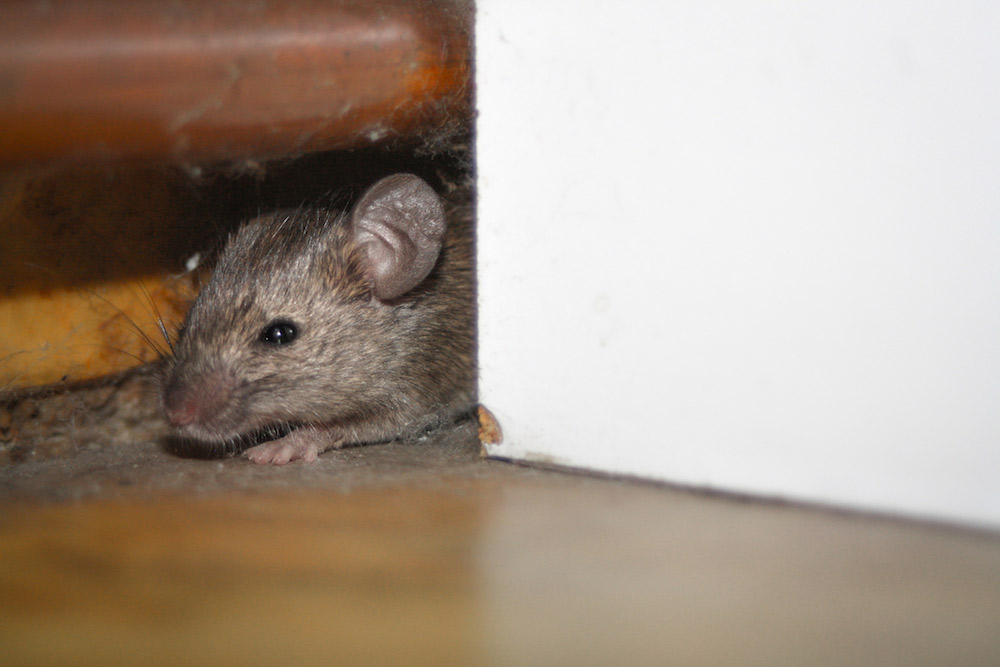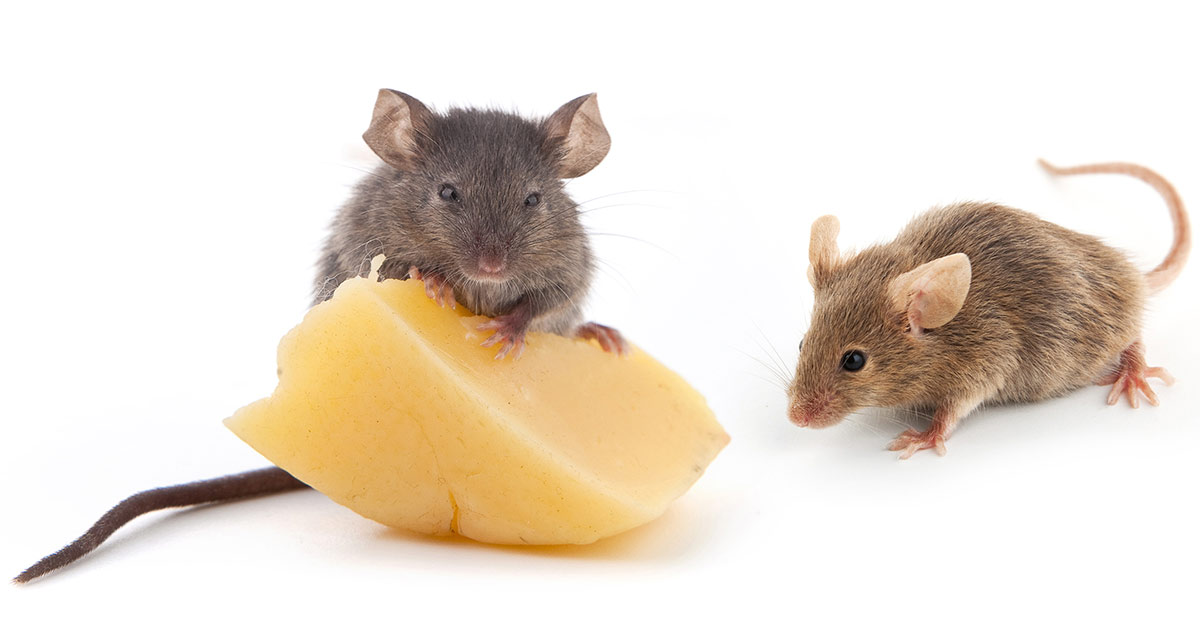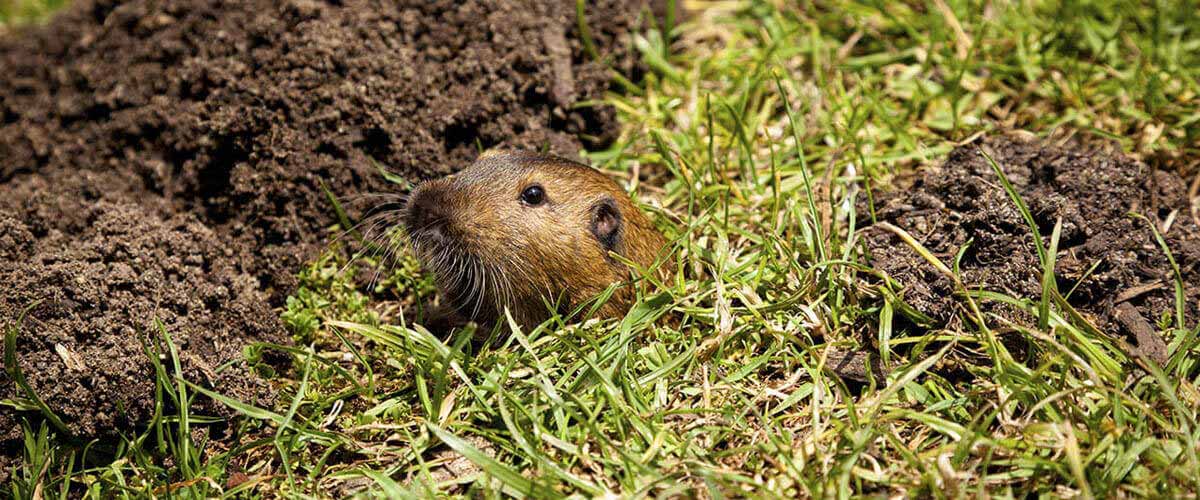How to Catch a Mouse in Your House
Discovering a mouse or rat in your home can keep you on edge until the creature is eliminated. Trapping an invading rodent can be quick and simple when you understand the opposition, have the best trap to kill mice and rats quickly, and know where and how to set it up.
CHOOSING THE RIGHT LOCATION FOR RODENT TRAPS IS A CRITICAL STEP TO SUCCESS
Multiply your chances for swift success by placing your trap where mice and rats are known to forage and feed. Rats typically search for food and water within 150 feet of their nests, but mice rarely go farther than 25 feet.1
Look for signs of activity, such as droppings, gnawing, nesting debris, or scattered food, to help determine where rodents will return.
Mice and rats both stay close to walls and edges as they move about, establishing runway-like paths along baseboards or shelves. When setting multiple traps, space mice traps 10 feet apart or less. Place rat traps at intervals of 15 to 20 feet.1 Corners and mid-wall runways are ideal spots.
Mice are curious and quick to investigate new things, including traps, while rats exercise more caution. Consider leaving an unset trap in an area for one or two days before you bait and set it. Once their defenses are down, you'll have a better chance at a catching these pests.

Mice and rats stick close to walls and corners.
NUT-BASED PRODUCTS ARE EXCELLENT BAIT FOR MICE AND RATS
For traps to succeed, the bait must be something mice and rats want to eat. If you've discovered that they've eaten and contaminated food in your home, use that item to lure them in. Otherwise, turn to proven enticements known to lure mice and rats.
Mice naturally feed on seeds and grains, but they also like high-protein and high-fat foods such as nuts, butters, sugars, and even bacon. Rats have a broader menu, eating basically anything that humans eat, including meats, grains, fruits, and vegetables.1
Despite the widespread idea that mice and rats prefer chunks of cheese, some common household favorites make better bait. Peanut butter, cheese spreads, and hazelnut-cocoa spreads are hard-to-resist baits that stay put until the trap does its work.
REVOLUTIONARY AMDRO® MOUSE & RAT TRAPS ARE SIMPLER AND SAFER TO SET

Place traps in areas where mice or rats scatter food.
Rodent invasions are stressful times, and traditional, tricky-to-set traps can add unnecessary stress—not to mention a higher risk of snapped fingers and slow kills. With the innovative ring and tunnel design of Amdro Mouse Traps and Amdro Rat Traps, setting your trap is simpler, safer, and cleaner.
Just follow the simple instructions for setting and baiting your mouse or rat trap. Once it's set and secured, place the tunnel-like trap along a wall where rodents travel. If near a corner, place the trap so its open end faces the corner.
Lured by the bait, the mouse or rat enters the trap, which releases a powerful ring around the neck or chest area. Ejected from the trap, the rodent dies quickly—every time, guaranteed. No poison, no blood, no messy cleanup. The reusable trap is ready to be set again.
DISPOSING OF A DEAD MOUSE OR RAT COMPLETES THE PROCESS
With Amdro mouse and rat traps, rodents die outside the trap so disposal is just as quick and clean as the catch and kill. Always wear gloves and place the dead rodent in a sealable plastic bag. Once sealed, dispose of it in the garbage.
When picking up the rodent, consider borrowing a technique from dog owners who pick up after their pets. Turn the bag inside out over your gloved hand, grasp the rodent with your bag-covered hand, and roll the bag back down over the dead rodent, sealing it. Even your gloved hand never touches the dead pest.
Always dispose of dead mice and rats promptly to avoid attracting more pests or risk having a pet or child come in contact with any of the 35 diseases rats and mice can transmit directly and indirectly.2
With the help of Amdro's revolutionary ring design, you can kill invading mice and rats quickly, without the stress or mess. Amdro is here to help you put an end to pest disruptions in your home by providing you with premium pest control products and the information you need for success.
Always read product labels thoroughly and follow instructions.
Amdro is a registered trademark of Central Garden & Pet Company.
Sources:
- M.F. Potter and G.M. Beavers, "Rodent Control," University of Kentucky Department of Entomology, March 2017.
- Centers for Disease Control and Prevention, "Rodents," July 2010.




